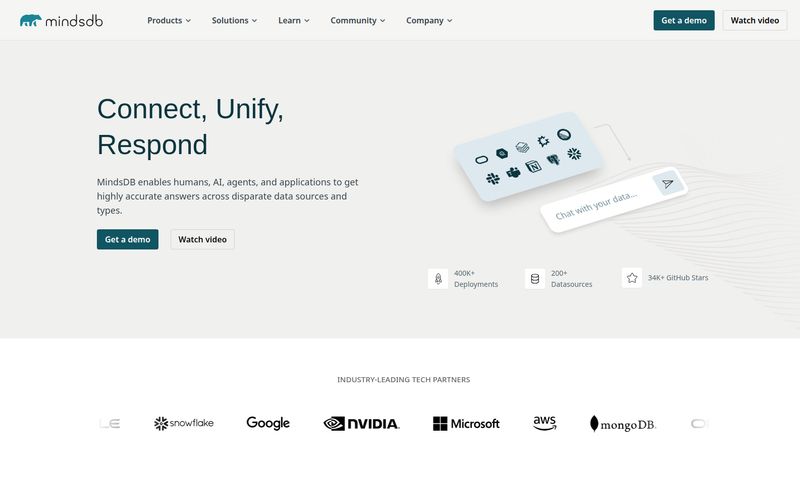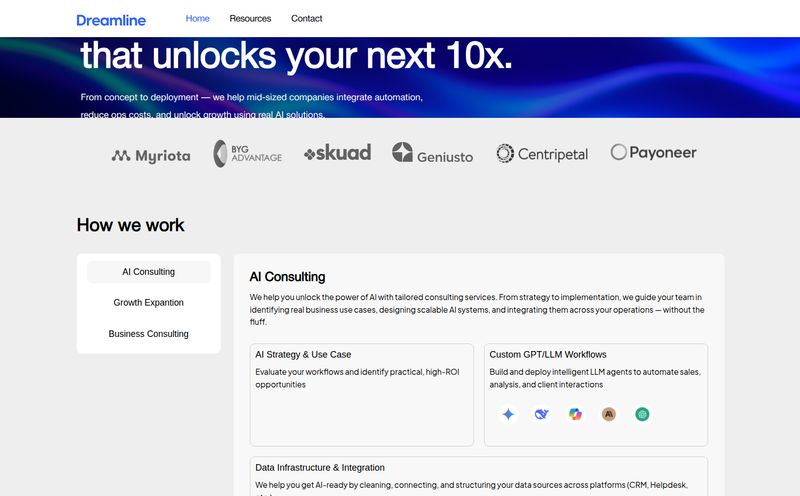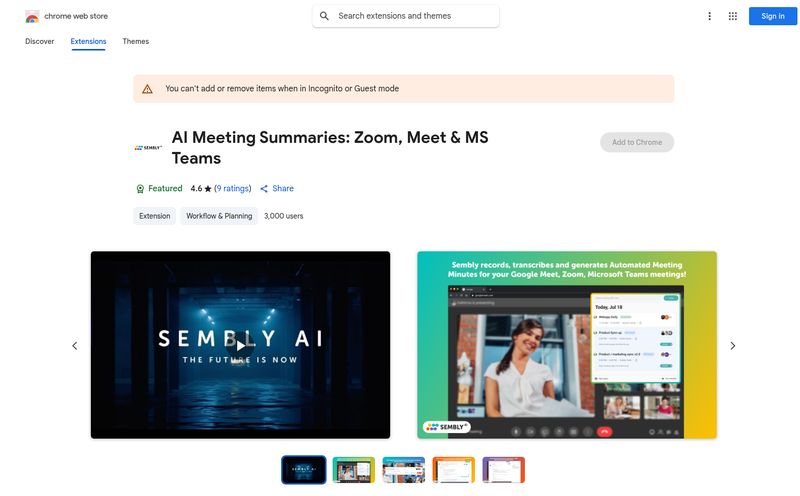If you’re a business owner, a freelancer, or a team lead, your digital workspace probably looks a little like a teenager’s bedroom. You’ve got a tab for your project management tool (maybe Trello or Asana), another for Slack, your calendar is screaming for attention in a third, and your accounting software is lurking somewhere in the background. It's organized chaos, on a good day. For years, I’ve been on a personal crusade to find a single platform that could tame this beast. A tool that doesn’t just store information but actually understands it.
We've all heard the promises. The all-in-one solutions that end up being masters of none. So, when I stumbled upon Superify, I was skeptical. Another tool promising to unify everything? Yawn. But then I saw the magic words: “AI-powered business partner.” Okay, you have my attention.
What Exactly is Superify?
Superify isn’t just another project board with a pretty interface. The best way I can describe it is as an AI brain layered on top of a project management system. It aims to be your single source of truth by acting as your project manager, scheduler, and even a quasi-accountant and assistant, all rolled into one. The core idea is to stop the madness of context-switching—that draining process of jumping between ten different apps just to figure out what you’re supposed to do next.
It’s designed to take your high-level goals, your messy brain-dumps, and your daily chaos and, well, bring clarity. You talk to it, and it builds the plan. For anyone who has spent an entire Monday morning just planning the work instead of doing the work, this concept is a breath of fresh air.

Visit Superify
The AI-Powered Features That Actually Matter
A lot of SaaS tools are slapping an “AI” label on a glorified search bar these days. I wanted to see if Superify's features had real substance. Here’s what stood out to me.
AI Project Planning: From Idea to Action Plan
This is the main event. Instead of manually creating a project, breaking it down into milestones, and then populating it with dozens of individual tasks, you can just… tell Superify what you want to achieve. For example, I threw a simple prompt at it: “Launch a 4-part blog series about the impact of Google's latest core update on e-commerce sites, including research, writing, design, and promotion.”
A few moments later, it spat out a structured project plan with tasks like “Research keyword trends for 'Google core update e-commerce',” “Draft Part 1: Initial Impact Analysis,” “Create social media graphics for launch,” and “Schedule promotional emails.” It even assigned logical (though generic) deadlines. Is it perfect? No. But it got me 80% of the way there in about 30 seconds. That’s a huge win compared to the hour I might have spent building that out myself.
A Centralized Workspace That Isn't a Hot Mess
The dashboard pulls everything together. You get a birds-eye view of your projects, your upcoming tasks, and critical deadlines without having to click through a maze of menus. This is the kind of thing that seems simple, but the mental relief of having one place to check for “what’s on fire right now?” is enormous. It helps your team stay aligned because everyone is literally on the same page.
The AI Assistant: Your On-Demand Business Partner
Beyond the initial project setup, the AI assistant is always there. You can ask it questions like, “What are the most urgent tasks for the website redesign project?” or “Summarize our progress from last week.” It feels less like a simple chatbot and more like having a junior project manager on call, ready to fetch information for you. It's a subtle but powerful shift in how you interact with your own workflow.
The Good, The Bad, and The AI
No tool is perfect, and my job is to give you the real scoop, not just the marketing copy. So let’s get into the nitty-gritty.
The Good Stuff (Why I'm Genuinely Excited)
The main advantage is the genuine time-saving on the front end of project planning. It's intuitive, and the AI-generated tasks really do provide a solid foundation to work from. I also appreciate the scalable nature of the plans. It’s built to grow with you, from a one-person shop to a bustling small team. The interface is clean and doesn't feel bloated, which is a common problem with feature-rich platforms.
The Not-So-Good Stuff (Let’s Be Real)
Okay, here’s the reality check. AI is still AI. It can and will make mistakes. I noticed a few odd suggestions and you absolutely cannot trust it blindly for critical information. Always double-check dates, figures, and important instructions it generates. Think of it as a brilliant but sometimes forgetful assistant. My biggest gripe, however, is with the message limits on the lower-tier plans. 10 messages on the free plan and 200 on the Starter plan feels a bit restrictive. If you really lean into using the AI assistant, you could burn through those pretty fast. Lastly, this workflow just won't be for everyone. Some people find comfort and clarity in the manual, tactile process of building their own systems. If you're one of those people, the AI-first approach might feel like a loss of control.
Let's Talk Money: Superify Pricing Breakdown
Pricing can make or break a tool, so here’s how Superify structures its plans. It’s worth noting these prices are based on annual billing, so you’re looking at a yearly commitment.
| Plan | Price (Billed Annually) | Key Features |
|---|---|---|
| Free | Free | 1 project, 10 tasks, 10 AI messages. A true trial. |
| Starter | $210 / month | 5 projects, 100 tasks, 200 AI messages. Good for solo pros. |
| Professional | $350 / month | 10 projects, 200 tasks, 400 AI messages. Better for small teams. |
| Superify | $710 / month | Unlimited everything. The all-in plan. |
My take? The Free plan is a taster, not a meal. The 10-message limit means you can see how it works, but you can't run a project on it. The Starter plan feels like the sweet spot for freelancers or very small teams who want to seriously try this workflow. The Professional and Superify tiers are clearly aimed at established businesses who are ready to fully commit to an AI-driven process.
Who is Superify Actually For? (And Who Should Skip It?)
So, who should click that sign-up button? In my opinion, Superify is a fantastic fit for tech-forward freelancers, startups, and small marketing agencies. If you're already comfortable with new technology and you feel like you're drowning in administrative tasks, this could be a game-changer. It’s for the person whose brain moves a million miles a minute and just needs a system to catch and organize all the ideas.
Who should probably pass? Large corporations with deeply entrenched, complex workflows in tools like Jira or a massive Asana setup might find it hard to switch. Also, if you’re an AI-skeptic or someone who finds deep satisfaction in manually crafting every detail of your project plan, you might find Superify’s automated approach more frustrating than freeing.
It’s not a magic wand, but it is a powerful and very interesting new way to work. It represents a shift from passive data storage to active, intelligent assistance. And frankly, it's about time. The future of productivity isn't just about having more features; it's about having smarter systems that do some of the thinking for us.
Frequently Asked Questions about Superify
- What makes Superify different from Trello or Asana?
- The core difference is the integrated AI assistant. While Trello and Asana are fantastic for manually organizing tasks, Superify actively helps you generate the project plan and provides ongoing insights through its AI, turning a passive tool into an active partner.
- Is the AI in Superify reliable?
- It's impressively capable for planning and organization, but it's not infallible. It's best to treat it as a highly intelligent assistant—one whose work you should always double-check before signing off on critical details or deadlines.
- Can I try Superify for free?
- Yes, there is a Free plan. However, with limits of 1 project, 10 tasks, and only 10 messages to the AI, it's best viewed as a demo to get a feel for the platform rather than a long-term solution.
- How steep is the learning curve?
- Because the main interaction is conversational, the learning curve is surprisingly gentle. If you can describe what you want to do in a sentence, you can use Superify. The interface itself is clean and intuitive.
- Is the pricing per user or a flat fee?
- Based on the pricing structure, the plans appear to be flat monthly fees (billed annually) for a certain number of workspaces and resources, rather than a per-user cost, which can be beneficial for growing teams.
- Can Superify completely replace my human virtual assistant?
- For administrative tasks like planning, scheduling, and task breakdown, it can handle a surprising amount of the workload. However, it can't replace the human nuance, strategic thinking, and client communication skills of a great VA.



